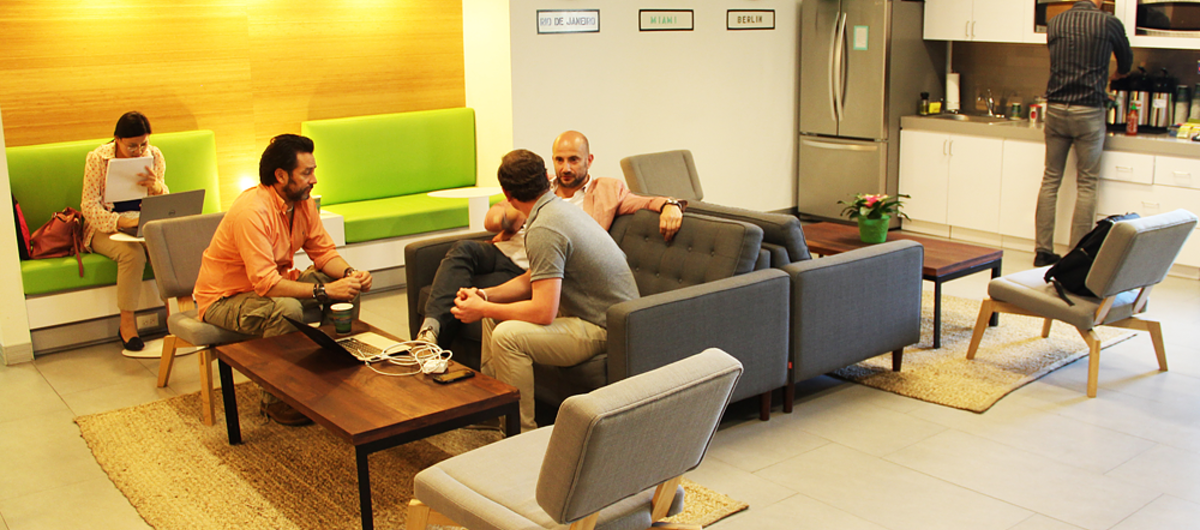A guest article by Steve King from Smallbizlabs:
1. Cloud Automation tools are simplifying a wide range of traditional small business applications such as accounting, payroll, inventory management, HR and benefits administration, etc. Cloud tools from companies like Zenefits (HR administration), Intuit (QuickBooks Online), Nimble (CRM) and others are not only simplifying business processes; they’re allowing workflows to be reimagined and reengineered – saving time and money and creating new ways of working.
2. Ambient Proximity: OK, I admit this is on the list because it’s such a cool buzzword. Ambient proximity refers to the ability of smartphones to interact seamlessly and autonomously with their surroundings thanks to the growing deployment of “Beacons”. These inexpensive devices use Bluetooth to automatically push information back and forth between themselves and nearby computers (usually smartphones). Already in use by Apple and other major retailers, Beacons are being used for applications such as in-store customer service notifications, special upgrade offers and personalized marketing messages.
3. 3D Printing: Despite being one of the most hyped technologies of the past few years, we’ve resisted adding 3D printing to our top 10 lists due to technical shortcomings – until now. Improved hardware, cheaper and better performing input materials and the emergence of 3D printing service providers are turning 3D printing into an increasingly viable small business prototyping tool and, in certain situations, small batch manufacturing platform.
4. Security and Privacy: Due to a series of high profile cyber security breaches (Target, Sony, etc.) consumers and business customers have become much more concerned about information and data security and privacy. Add to this a growing wave of cybercrime – which is increasingly targeted at small business through the use of automated online bots – and 2015 looks like a year when online security and privacy will be major small business issues.
2015 Economic Trends
Despite signs of a global slowdown, our 2015 U.S. economic outlook is for continued solid if moderate growth with U.S. GDP increasing in the 2.75% to 3% range.
5. Energy: Oil prices have fallen from over $100 per barrel in July to about $57 dollars today. This rapid decline will be felt across the economy – in both good and bad ways – in 2015. The major positive is, of course, lower energy bills. But there is a negative side to declining oil prices. The U.S. energy sector has been one of the strongest sources of recent economic growth, creating both direct and indirect market opportunities for many small businesses. These firms will be hurt as the energy industry cuts back due to lower prices. While the net economic effects of declining oil prices are positive, small businesses need to evaluate the impact of lower prices to see if they are energy winners or losers.
6. Crowdfunding Moves Towards the Mainstream: Crowdfunding is not a new trend, but until recently few small businesses used this method to finance their business. This is rapidly changing as growing numbers of firms successfully raise money via crowdfunding platforms. 2015 will see this growth continue and will also see equity crowdfunding start to gain traction. While legislation allowing this form of equity financing remains stalled at a national level, about a dozen states now allow equity crowdfunding. Small businesses in these states will start to take advantage of this option in 2015.
7. The Shift from Jobs to Gigs: Instead of traditional job identities, workers are increasingly relying on a portfolio of talents, skills and occupations to create multiple streams of income via a mix of traditional jobs, independent work and/or part-time gigs. These portfolios of gigs may or may not map with one particular career path and are driven by the need to earn income, uncertainty due to a lack of job security and the desire to work in meaningful and/or interesting ways.
8. Corporate HR Departments Wake Up about the Contingent Workforce: Long viewed by corporate HR departments as a way to save money, the independent workforce (freelancers, contractors, independent consultants, etc.) is increasingly being seen as a strategic resource. Corporations large and small are turning to independent workers to increase workforce agility and flexibility, provide specialized and/or hard to find talent and even add competitive advantage. This shift is leading to the increased use of independent workers, providing more opportunities for the growing numbers of people pursuing this path.
2015 Social Trends
Economic uncertainty and a lack of job stability are leading to social shifts and changes in consumer behavior.
9. The Lean Years: Coined by Millennial blogger Melina Coogan, "The Lean Years" describes the angst felt by this generation (and many of those who are older) due to a lack of personal economic stability caused by slow growth, stagnant wages and declining job security. The resulting uncertainty is leading people to avoid long term or major commitments, both in their personal lives and as consumers. The impacts of “Lean Years” thinking include (but aren't limited to) lower marriage rates, birth rates, and home ownership rates and a resistance to large purchases of all kinds. "Lean Years” thinking will continue in 2015 and small businesses need to evaluate its impact on their firms.
10. Just in Time Learning: Long touted as the next big thing,low-cost yet highly professional on and offline short, specialized training courses and programs are finally starting to deliver on their promise of improved business education. The hugely successful programming camps – 8-10 week immersive courses that teach programming skills – show that even complex topics can be taught relatively quickly and in a just in time manner. These types of programs provide small business the ability to adapt and adjust to changing business conditions. They also provide independent workers (and others) a way to upgrade their skill and/or learn new ones.
:::
Small Business Labs, from Emergent Research, covers the key social, technology and business trends impacting small business. Follow them on Twitter.








